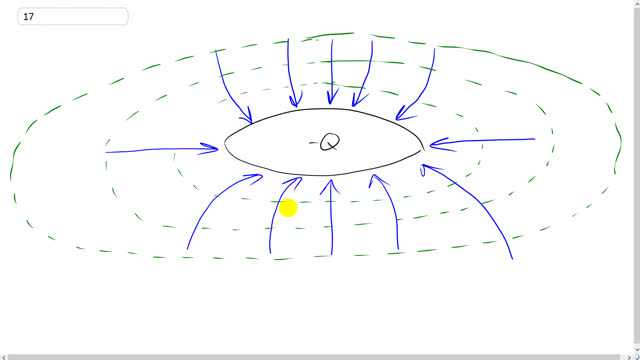
Draw a conductor in the oblong shape of a football. This conductor carries a net negative charge, -Q. Draw in a dozen or so electric field lines and equipotential lines.

In order to watch this solution you need to have a subscription.
This is Giancoli Answers with Mr. Dychko. Because this football shaped thing is conducting that means the electrons and the net charge will be distributed evenly around this whole object. Now the object is oval shaped. When we consider a point here it's going to see lots of electrons nearby. And so there's gonna be a strong electric field here versus a point here. We'll see only a few electrons nearby and most of the electrons are quite far away over here and distance makes a big deal when it comes to electrostatic field because it varies as one over r squared so having electrons far away significantly reduces electric field. So this point here will have a small electric field because most electrons are far away in this oblong shape thing and down here. Likewise as for up straight about here lots of electrons are nearby. And I mean the furthest distance away is the minor axis of the ellipse, you might say, this small distance here. Whereas here the greatest distance away for an electron is this major axis of the ellipse. And that's a long ways away. So this is going to be a small electric field on this end as well. So that explains the different spacing of the electric field lines. So there the distance between electric field lines here is small and then it gets bigger and then it gets really big. And that separation distance between field lines indicates the relative electric field strengths. So when the field lines are close together, there's a strong electric field whereas when they're far apart as here the electric field is weaker. And it's no accident that the spacing between equal potential lines is different as well. So here the equal potential lines are spaced close together. And so this distance here is what I'm referring to. Whereas near the ends the distance between the equipotential lines is far because since the electric field is smaller there's... electric field does less work for a given distance because it exerts less force. And so the rate of change of the potential energy is going to be smaller so you have to go a greater distance to get the same change in potential energy, given that the force is smaller. So at the end the distance between equal potential lines is large because of these small electric field.